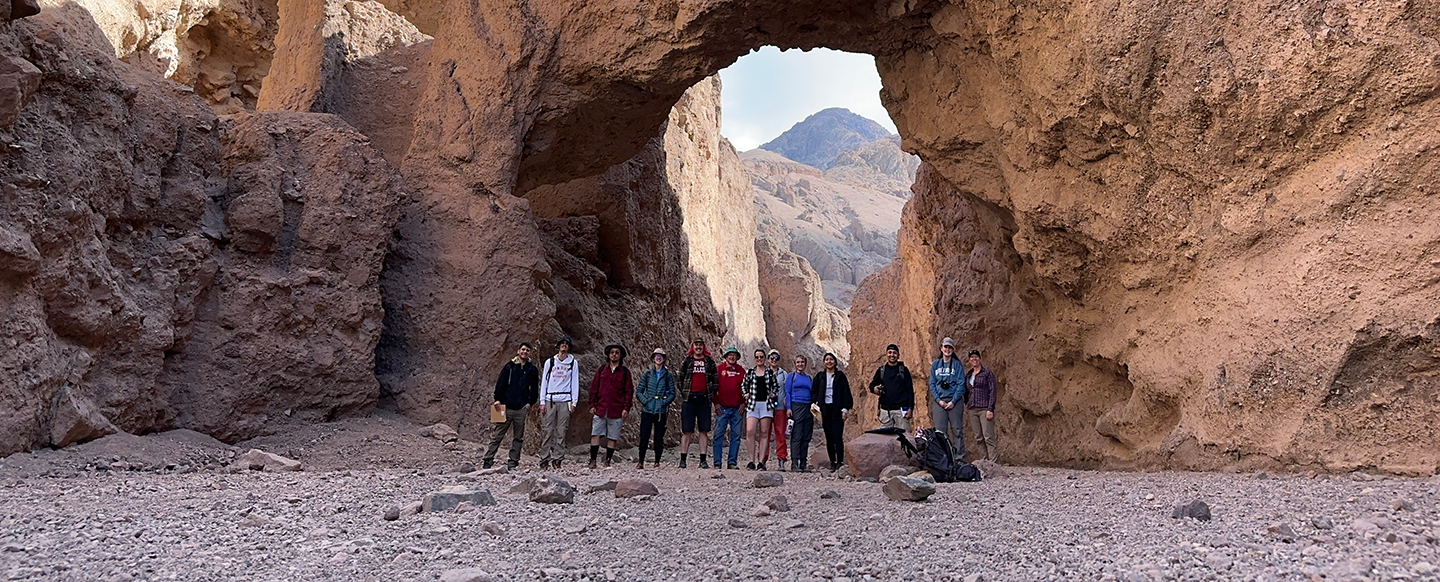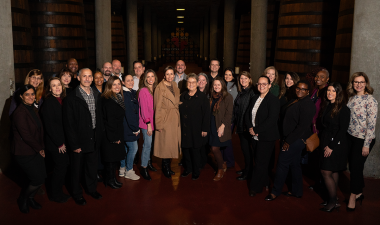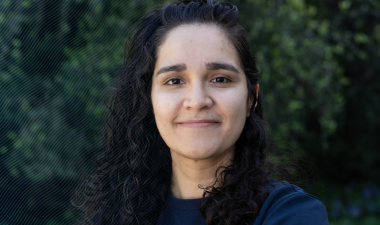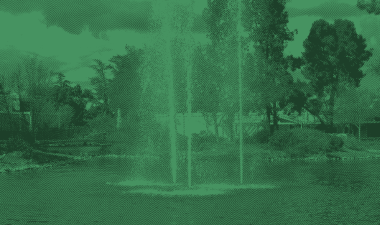During a recent seven-day class trip to Death Valley National Park, a group of Stanislaus State geography and environmental resources students were impressed by the bounty of life they found in a place with a lifeless name.
“People think the desert is dead and there is nothing there, but that is not the case. The desert is very much alive,” said Yaniri Piza, a Ceres resident who plans to graduate in spring 2024. “This trip gave me a new perspective on the desert.”
Piza was one of 10 students who spent spring break in Death Valley as part of the Geography 4700 course titled, “Geographical Processes in Arid Landscapes: Death Valley.” Offered every other year, the four-unit class teaches field techniques in geography through the analysis of geomorphic processes, climate characteristics, vegetation patterns, adaptations and human impacts in an arid environment.
Associate Professor of Geography Alison McNally and Lecturer Chuck Bowen oversaw the trip. McNally said it was the same trip she took more than two decades ago when she was an undergraduate student at Stan State.
“This is one of our hallmark courses, and this trip is the type of field experience students don’t usually get,” McNally said. “Students can learn about desert processes, biodiversity and physical landscapes in the classroom, but to go out and be right in the middle of it — they’re living it. They’re feeling it, touching it. It just makes the connection so much deeper when they get out into the field.”
The group stayed in tents pitched at Furnace Creek Campground and used two vans to travel within the park each day. When they arrived at each destination, they hiked to a spot where they could get a close look at geological and historical features, as well as flora and fauna.
Piza, who aspires to a career using her geographic information system (GIS) skills, said she was especially interested in learning about the Indigenous people who have lived in Death Valley for thousands of years.
“The Indigenous people in the Timbisha Shoshone tribe are still living there today, close to nature and practicing traditional ways,” said Piza. “I really admire the way they have lived in desert conditions for many years. They know how to adapt.”
The students visited Badwater Basin, Dante’s View, Artists Palette, Zabriskie Point, Ubehehe Crater, Golden Canyon and the Ashford Mill ruins. They studied alluvial fan formations made in the soil by rainwater drainage, saw the effects of tectonic activity and harsh climatic conditions on the landscape, practiced mapping skills and identified plants and animals.
Students kept detailed journals to document their observations and made presentations in the field based on information they collected before and during the trip.
Daniel Ruega, a geography major and history minor from Keyes, not only wrote meticulously in his journal every day, but he also added drawings and small photos from a Polaroid camera. His journal included wildlife sightings of foxes and coyotes and noted that there were “tons of wildflowers” brightening the landscape during the students’ visit.
Ruega, who plans to graduate in the fall and become a city planner, said he was taken aback by the low humidity in the park, which was documented at 10% that week by the National Park Service.
“I never experienced what dry meant until I went to Death Valley,” Ruega said. “No matter how much water I drank, I still had some symptoms of dehydration.”
On the third day of the trip, a windstorm swept through the valley. When the group returned to their camp that evening, they found their tents were no match for the high winds.
“We just sprang into action and ran to our tents, which were all blown over and had sand in them,” Ruega said. “Some were buried, and we had to dig them out of the sand. We worked together to get everything rebuilt and back into place. We gained a lot of respect for nature in Death Valley that day.”
Piza said the storm broke her tent, which she found disheartening.
“But I could see the bright side,” she said. “Everyone came together to help each other out. It really bonded us.”
Sandra OShields, a geography and environmental resources student who expects to graduate in the fall, found the diversity and tenacity of plant life in the desert to be fascinating.
She said she was especially intrigued by some of the small, delicate wildflowers she found growing in gravelly soil with shallow root systems. She marveled at how they survived in the desert’s harsh conditions and credited their existence to adaptability.
“When you think of the desert, you think of the thorny cactus and shrubs,” OShields said. “You don’t expect to find delicate flowers.”
She said she knew Death Valley to be full of life, because she read about it before the trip. Once she arrived, she was surprised by the amount of life she found in the desert.
“Never underestimate what can be considered habitable,” she said. “The flora and the fauna that are endemic to the region are vast. It’s not just small insects and reptiles that live there. There were even massive birds of prey.”




